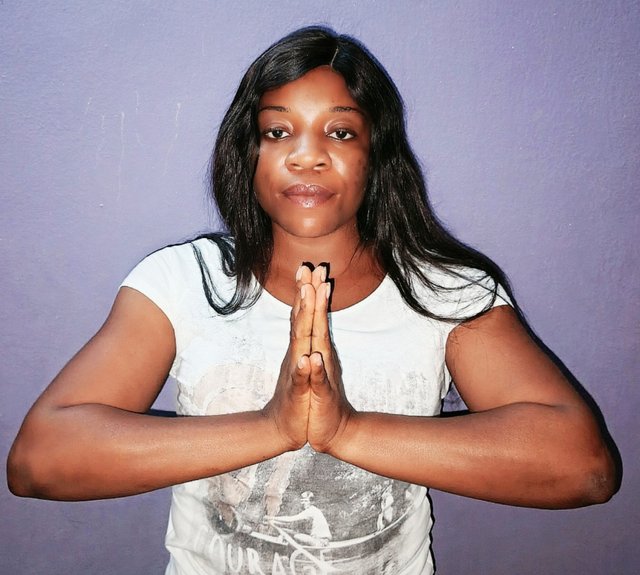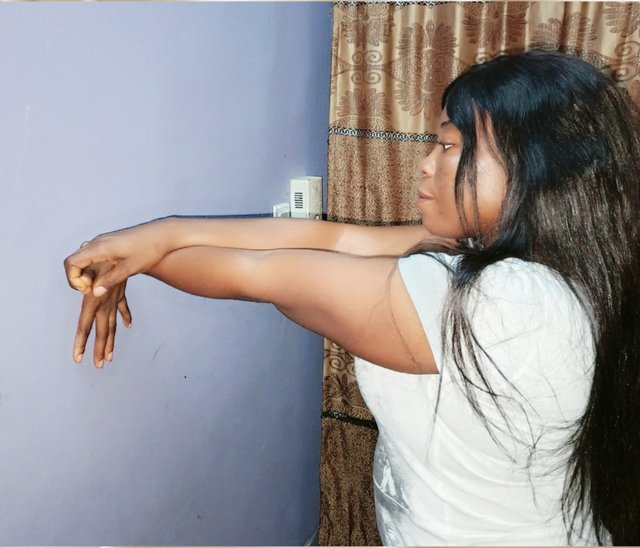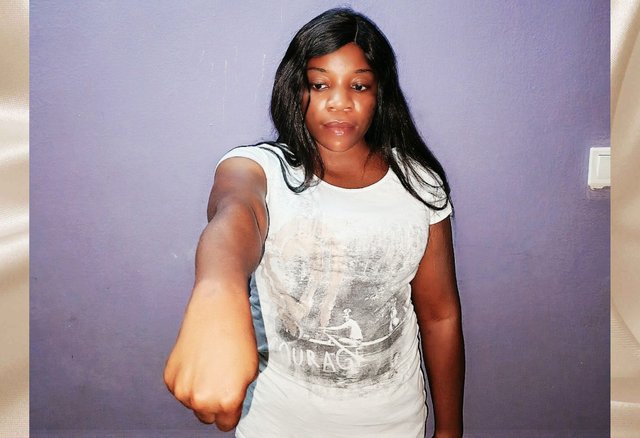Steemit Learning Challenge-S22W1; Carpal Tunnel Syndrome

Carpal tunnel syndrome is a very painful condition that could affect our wrist and hand, and it happens when our median nerve is pressurized. If we recognize the symptoms early and take preventive measures it can help us to manage it or better still avoid it entirely.
Carpal Tunnel Syndrome: Occurs when the median nerve runs from our forearm into the palm of our hands and then compresses or pinches us as it passes through the narrow passage of our wrist known as the carpal tunnel.
Numbness Or Tingling: If one is feeling a tingling sensation or numbness in his or her thumb finger, index finger, middle or ring finger.
Pain: Having pains in our fingers, hands or even our arms and the pain worsens at night or when we do certain activities.
Weakness: If we find it hard to hold or grip things because our hands are weak.
Acute CTS: this kind of carpal tunnel syndrome is severe, and it's caused by injury or fracture on the wrist or hand. Symptoms usually last for a few days or weeks.
Primary CTS: the cause for this type of carpal tunnel syndrome can not be pinpointed it is spontaneous.
Secondary CTS: this type of CTS occurs in patients with underlying issues like diabetes, thyroid problems and obesity. Pregnancy sometimes can cause it etc.
Chronic CTS: occurs due to repetitive use of vibrating tools or typing consistently for weeks or months.
Serval factors contributed to CTs and these include:
- Repetitive hand movements, for example, if we're always typing or using the mouse.
- Fracturing or Injuring our wrist.
- Fluid retention during pregnancy.
- Conditions like arthritis, thyroid problems and diabetes can cause CTS.
Carpal tunnel syndrome is not hereditary, though genetics might play a role. Some people may likely develop this syndrome, These include:
- Those whose jobs involved moving their hands and wrists repetitively.
- Those who are overweight or obese.
- Those who have a family history of the condition.

There are many ways of treating CTS, and this depends on the severity of the syndrome:
Rest: If the patient rest from those activities that worsen the symptoms, for example having a break from typing, or using vibrating tools.
Splints: If the patient wears a wrist splint at night it can help to keep the wrist in a neutral position thus relieving pressure on our nerve.
Exercises: performing the exercises we've learned in this course can be helpful, it will strengthen and stretch our hands and wrist.
Medication: Some over the counter pain relieve drugs can help in reducing the inflammation.
Surgery: Surgery might be the final solution to some severe cases.
We can prevent this condition by:
Taking breaks regularly from some repetitive tasks that could affect our hands and wrists negatively.
Using of ergonomic tool to support our wrist.
Maintaining a good posture while working.

I will follow the below steps to determine if someone has carpal tunnel syndrome and know how severe it is:
I will check the patient's medical history, I will ask the patient if he/she feel pain, numbness or tingling in his fingers, especially his thumb, middle or index fingers.
I will conduct a physical examination, on the patient, checking the strength in the patient's hand and fingers. Checking if the patient can grip or hold things, and I will also check if he's having any swelling around his wrist or if he's feeling tender. And lastly, I will do manual tests to see if symptoms triggered.
I will perform Tinel's test by tapping over the patient's median nerve at the wrist, and If it tingles the patient fingers that suggests she might have CTS.
I will do Phalen's test by holding the patient's wrist, and bending it forward for about a minute, if this leads to symptoms, it means she suffers from CTS.
I will conduct nerve study, measuring how fast the patient's electrical impulses travel through his median nerve. If it's slow it means that he might have CTS.
I would demand for ultrasound or MRI as this will show any nerve compression and other issues.
- Median Nerve Glides: I carryout the exercises by myself, and this particular one was straightforward and very beneficial. I did it by stretching gently, it helped to mobilize my nerve. This exercise helped in reducing any tingling or discomfort that comes with the syndrome.
- Arm Prayer Stretch: I like this exercise, it provides a good feeling and relaxation in my shoulder, wrist and my whole body. Holding on to this position was manageable, and it is good for muscle balance, and flexibility.
- Stretches For CTS: These specific stretches reduces any symptoms of CTS and it's very beneficial. I perform them gently, and I learn that practicing it regularly lead to better managemen.
I felt relaxed after performing these exercises, and I observed that they promoted nerve mobility, it improved flexibility in my wrist and hand and it reduced tension. I believe that consistency and doing it properly can maximize benefits.
I really enjoy your course @ashkhan dear, hi @gracyakan, @iddy and @shiftitamanna join this contest.
Thank you for understanding the lesson and sharing your assignment; I hope that you will enjoy this week's lesson and try to implement it in your life if you see any such case.
Observations
Task 1 (3/3)
You have shared a great knowledge about carpal tunnel syndrome, its symptoms, cause, and its types. I appreciate your effort.
Task 2 (3/3)
In the second question, you tell us about how you have to assess a patient by doing physical examination, history taking, special tests and investigations. Excellent.
Task 3 (3.8/4)
You try the CTS stretches, median nerve glides and arm prayer stretch exercises. You did the median nerve glides, arm prayer stretch correctly. But in CTS stretches try to hold the position for at least 5 to 10 seconds for better results. Always remember to apply heat pack before performing exercises to relax the muscles and reduce stiffness. I appreciate your efforts.
Overall you made a great attempt to answer all the questions. I appreciate your efforts. But next time try to avoid the above written suggestions. Keep learning and try to implement your knowledge to the people suffering from carpal tunnel syndrome or any type of wrist. Thank you.
Thank you so much, dear for your beautiful commendations. I've noted your corrections about the seconds I should be holding the stretches.
Thanks for the invite, you really follow the course which shows that you are a good student, you read from me soon, once again well-done.
Thanks for the compliments, I'll be on the lookout for your entry.
Wow
I’d put this all to test
Thanks for sharing them
Ok, dear, it's workable!
¡Saludos amiga!🤗
La intervención de un fisiatra es clave para el diagnóstico o en su defecto, recuperación del túnel carpiano. Te cuento que en mi caso tuve que asistir a sesiones terapéuticas durante siete meses, porque el daño que tenían mis muñecas era terrible.
Te deseo mucho éxito en la dinámica... Un fuerte abrazo💚